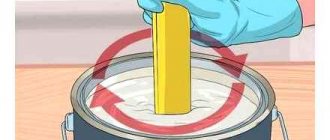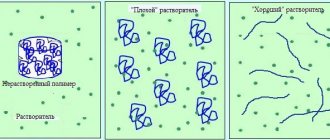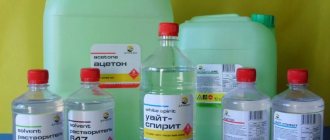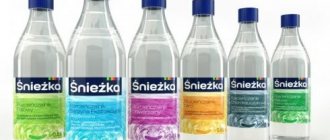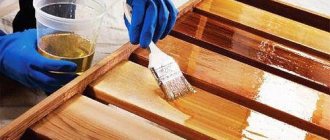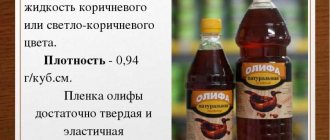In what cases is dilution necessary?
On the shelves of construction stores there are materials of various purposes and consistencies. Thick paints have richer shades, are applied in one layer, and retain color and texture longer. However, in some situations it is necessary to obtain a thinner solution. Such cases include the following:
- the composition stood open for a long time and hardened;
- the work is performed with a spray gun;
- a wooden product is painted;
- the base layer is laid.
Thinning for different instruments
Ceilings, walls and other surfaces can be painted with different tools, each of which requires a certain level of dye viscosity. At home, the parameter is determined by a viscometer. This is a common device sold in any hardware store. It resembles a funnel with a hole at the bottom of different diameters.
The viscosity level is determined by the time it takes for the composition poured inside the funnel to pass through the nozzle. Measured in seconds. The measurement goes like this:
- The solvent is added to the paint container.
- The contents of the container are mixed.
- A viscometer is immersed in the mixture.
- Prepare a stopwatch or any other device for measuring time in advance.
- The viscometer is removed from the mixture, and at the same moment the stopwatch starts.
- When the mass has completely poured out of the funnel, the timer turns off and the time indicated on it is recorded.
To use a brush or roller, the paint viscosity should be 10-15 s; a dye with a viscosity value of 25-30 s can be applied with a spray gun.
Petroleum distillates
Everyone knows what turpentine is, and it could be included in the sixth group of liquids. However, its performance characteristics are very close to those of petroleum distillates, and it is best to include it in this group. Each specific solvent for oil paints from the group has its own characteristics. The most common are petroleum distillates, which are also called hydrocarbons. The molecule of such a substance is a carbon and hydrogen atom. Liquids that are included in this group are produced by refining oil, or rather by dividing it into fractions under the influence of temperatures. Turpentine is a distillation product, but it is not obtained from oil at all, but from softwood resins.
Petroleum solvents are used to work with waxes, oils, paints, and oil-based enamels. Any oil paint solvent whose composition is based on hydrocarbons has characteristics and properties that are similar to those of oils or waxes. Sometimes these liquids can be used in the production of lubricants or compositions for cleaning and caring for furniture. Distillates, which contain significantly less oil, such as toluene or xylene, can be used to remove oil stains and are most often used to degrease surfaces.
Any products based on petroleum distillates can be mixed in different ways and in any proportions. Alcohols and glycol ethers are not used with oil paints. They have different characteristics and properties.
Turpentine
This thinner is made from the resin of coniferous trees using distillation. The following types of turpentine are produced by industry:
- gum: the most valuable, distillation is carried out using steam;
- wood, obtained by dry distillation; this method is only possible when using wood containing a high amount of resin;
- extraction: a product of volatile fractions evaporated with the help of organic solvents;
- sulfate: in fact, it is a waste obtained from the production of paper and cardboard, boiled in a solution of caustic and sulfur dioxide; the main reagent is sodium sulfate; Due to high toxicity, use in residential areas is not recommended.
Gum and wood turpentine dissolve perfectly, do not impart excessive dullness to the composition, and have a pleasant pine smell. It is also used as a solvent for oil-phthalic paints. Such compositions are absolutely non-toxic and can be used in residential areas.
Thinner or solvent?
Terms are used to refer to different properties of solutions. Thinners include products that do not react chemically with the components of the material. They give the material a certain viscosity and do not destroy film formation.
Solvents, on the contrary, when they enter a substance, penetrate its structure and change its properties. The volatile liquid destroys hardened pigments and returns the composition to its previous state. It is worth noting that solvents, due to their more aggressive action than thinners, can partially change the original properties of the paint, for example, make it dull or make the color duller.
In fact, thinners and solvents are not found in their pure form. Paint is a multicomponent composition that has its own characteristics depending on the manufacturer and purpose. Therefore, a substance can act more as a solvent on one paint, and as a thinner on another.
Products that can be classified as oil paint thinners are linseed oil and drying oil. Since they form the basis of oil paints and do not affect them chemically. Therefore, in order to preserve the original properties of the paint as much as possible, it is worth giving preference to these substances.
Dilution of artistic paints
Such compositions are ground pigments dissolved in bleached linseed oil. We'll tell you how to dilute such oil paints. Solvents for them should be selected very carefully. For these purposes you can use:
- refined vegetable oils: hemp, flaxseed or sunflower oil;
- pinene: one of the components of the resin of coniferous trees; goes on sale under the name “Thinner No. 4”, how to use a similar thinner for oil paints can be read on the label;
- multicomponent compositions with the addition of pinene, varnish and oils.
Thus, when choosing thinners for oil compositions, you should focus on the type of surface and the requirements for it. But it should be remembered that excesses of even the highest quality solvent may not have the best effect on the quality of the coating.
Main types of solvents for construction paints
Solvent for oil paints is easy to find in specialized stores. At the same time, there are several options to choose from that dissolve the coloring material well.
Solvent for oil paints is easy to find in specialized stores.
Drying oil
Drying oil is part of the oil paint itself, so you can dissolve the product with it without fear of losing the basic properties of the coating. Before use, thoroughly stir the substance.
Drying oil is part of the oil paint itself, so you can dissolve the product with it without fear of losing the basic properties of the coating.
Turpentine
It is used when you need to dissolve the composition for finishing work. It has an unpleasant odor, so if work is to be done inside the house, good ventilation should be ensured. The composition may contain resin, tree resin and chemical elements. If resin was used, it will emit the characteristic smell of pine resin, which dries quickly.
It is used when you need to dissolve the composition for finishing work.
White Spirit
This is a universal thinner, used by both artists and builders. It handles dilution of dry material and can also clean painting tools well. It quickly copes with its task, but changes the properties of the coloring matter. Gives off a strong unpleasant odor. Can also be used as a degreaser. It is possible to mix it with turpentine in equal proportions.
This is a universal thinner, used by both artists and builders.
Number solvent 647
Solvent number 647 is sold at an affordable price. And it is used as a thinner for many types of paint and varnish products. They obtain a uniform consistency, but the smell is pungent, and in addition, it is a flammable product.
They obtain a uniform consistency, but the smell is pungent, and in addition, it is a flammable product.
Gasoline "Galosh"
No additives are used in its composition. When using it, you can vary the constituent elements; the characteristic gasoline smell is not very noticeable. During production, hydrocarbons included in the composition are exposed to high temperatures.
When using it, you can vary the constituent elements; the characteristic gasoline smell is not very noticeable.
Kerosene
An excellent option for dissolving oil-based solutions. Can restore hardened paint. To get the maximum effect, you can add driers to kerosene; an example is turpentine. The only thing is that such an additive will increase the time for complete drying.
An excellent option for dissolving oil-based solutions.
Is it possible to dilute paint with gasoline or kerosene?
Quite. Moreover, paints that have become very thick during storage dissolve best in kerosene. Kerosene should be selected well cleaned, otherwise the glossy shine of the paint will disappear. It is better to take A-80 gasoline. When it is added, the properties of the composition do not deteriorate. The jar should indicate that it can be diluted with white spirit.
Due to the specific smell, you should not use gasoline and kerosene indoors. After all, it disappears slowly. Plus, the drying speed will slow down when adding gasoline or kerosene.
Types of thinners
I advise beginning artists to purchase three main thinners for painting: linseed oil, tee and pinene.
Thinner No. 4 (pinene)
Pinene or thinner No. 4 is one of the most versatile thinners. This thinner is suitable for thin layers of oil painting. It dilutes paints and varnishes well and hardly turns yellow over time. This thinner also dries quickly and well and has a transparent color.
One of the disadvantages of pinene is its smell, which is very specific and not the most pleasant. Therefore, if you are sensitive to odors, it is better to use a different thinner for oil paints.
Tee
Next in popularity and quality of its properties is the tee thinner. This thinner for oil painting consists of three components - dammar varnish, linseed oil and turpentine. You can buy a tee ready-made, or you can make it yourself by mixing all the components in the proportions you need.
It is worth noting that the tee has the properties of all three of these components at once: it protects the painting like a varnish, improves the properties of paints, since it contains linseed oil, and, of course, has the same specific smell as turpentine.
The tee is a very versatile medium in painting. But even though it already contains varnish, I would still recommend additionally covering the painting after the tee with varnish. The tee creates soft, smooth stretches and color transitions. This is a good thinner for oil paints also because, when applied, the tee adds shine, brightness and richness to the painting.
But again you can’t do without smell. Tee, like pinene, has a rather specific odor. The odorous turpentine itself is a fairly strong thinner, plus linseed oil, which also has its own smell, and the third component is artist’s varnish, which also has some kind of smell.
Therefore, due to such an explosive mixture, this thinner may seem unsuitable to some, even despite all its properties and qualities when working with it.
It is worth noting another significant disadvantage of the tee - its price. This is the most expensive thinner that can be distinguished among other thinners for oil paints. If turpentine and linseed oil are the cheapest thinners in oil painting, then tee is the most expensive.
Either way, whether you choose tee or pinene, both of these thinners are excellent for oil painting.
You can learn even more at my theoretical master class, registration for which is FREE. We won’t paint on it, but we will discuss in great detail everything related to working with oils! And after the master class, I will give you a free lesson on painting the “Starry Sky” painting, so that you can immediately try out the knowledge you have acquired
Register for the master class using the link - https://nyschool.ru/reg_artmk?utm_source=seo&utm_medium=blog&utm_campaign=allseo
Rules
To prevent the paint from deteriorating after adding thinner, you should follow these rules:
- First you need to assess the condition of the coloring solution. After opening the jar, its contents are thoroughly stirred. Due to the fact that drying oil is heavier than coloring pigments, it settles at the bottom.
- It is necessary to determine in what ratio to add the thinner. Due to the heterogeneous composition of paints, there is no single standard, but the volume of the infused substance cannot be more than 5% of the total volume of paint. When diluting the dye with white spirit in order to use it as a primer or base layer, this figure increases to 10%. Before adding the diluent, you can do a test mixing in a glass, cup or other container. After determining the proportions, the solvent is poured directly into the paint can. It is better to do this in small portions, while simultaneously stirring the solution. This will make it more uniform.
- During the work process, after some time, the paint may thicken again. This is due to the evaporation of the solvent, a small amount of which will “revive” the paint again.
A number of difficulties arise when paint is left outdoors for a long time. To “return it to service”, you need to do the following:
- The film formed on the surface of the paint must be carefully removed. If you mix it, the liquid will become heterogeneous, with small lumps, which you will no longer be able to get rid of.
- In a separate container you need to mix a little kerosene and white spirit, pour the mixture into the paint, stir thoroughly. Just as with the initial stirring, it is better to pour the mixture in small portions so as not to spoil the paint.
- You can start painting, or wait for the kerosene to evaporate, and then carry out additional dilution with a small amount of white spirit.
The important point is safety. On the one hand, both paint and solvents are highly flammable substances. On the other hand, they are also toxic and can cause dizziness, headaches, nausea and other ailments, so work should be carried out in a well-ventilated area.
Solvent 647
Oil paints should be diluted with caution. After all, this type of diluent, in addition to alcohols, hydrocarbons and ethers, contains acetone. If you add a little more of it to the paint, the quality of the composition will immediately decrease. The film may turn white or become dull.
As solvent 467 is an aggressive substance, it is best to use it to remove old paint and varnish coatings and film formers. But nitro enamels and nitro varnishes can be diluted with it without fear. Also rinse brushes well with solvent 647.
How to use drying oil
It is not difficult to dilute drying oil. The main thing is not to rush and pour the solvent into it gradually and little by little.
It is important to constantly stir the mass so that lumps do not form and the thickness is the desired consistency.
Experienced specialists pour in the required amount immediately, but beginners are advised to wait 8-10 minutes after each addition of solvent.
Important. A large amount of drying oil in the paint prolongs its drying time after application to the surface.
Safety precautions
Never neglect your own safety! Especially when working with toxic vapor-forming substances such as solvents and paints. Be sure to follow the basic rules:
- The use of personal protective equipment is mandatory: goggles, a respirator, gloves, and in particularly dangerous cases, a protective chemical suit.
- If the substance comes into contact with an open area of skin, immediately rinse the area with plenty of water.
- Always work in a ventilated area, otherwise you may be exposed to toxic fumes. And when using particularly aggressive substances - an explosion.
- Maintain normal room temperature when working with explosive substances. Elevated temperatures, operating heating elements or open flames are prohibited conditions.
- After completion of work, all containers must be tightly screwed and placed in a ventilated place away from direct sunlight. Storage is allowed only in a vertical position - with the plugs facing up.

